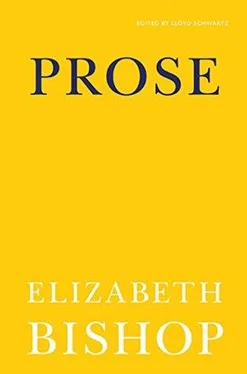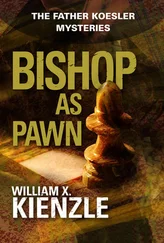Dom Pedro was proclaimed Emperor of an independent Brazil, but his reign lasted only nine years. He considered himself a liberal, and a very advanced one, and the constitution that he granted in 1824 lasted until the end of the Empire in Brazil. But there were constant revolts, foreign soldiers made trouble, regional differences and needs were not attended to, and his private life became too scandalous for even the tolerant Brazilians. His notorious mistress, Domitila, whom he created the Marqueza de Santos, meddled in state affairs, and he was blamed for the death of his first wife, Leopoldina, whom the people loved. After the death of his father he became heir to the throne of Portugal, but his younger brother was already there and trying to take power. Rebellion broke out all over Brazil; his personal army deserted him, and then he, too, left the country, to begin, in Europe, the “War of the Brothers.” Daumier left cartoons of them, two mean figures having a tug-of-war over a crown. This was the way things looked to Europeans, but Dom Pedro I had really been a much higher-minded ruler than that, greatly superior to his father, and honestly well-intentioned. Brazil has always proved hard to rule. And the ruler he now left behind was only five years old.
* * *
Except that he was equally energetic, Dom Pedro II was almost exactly the opposite of his mercurial, dissipated father. He had been carefully, even over-carefully, educated by a beloved governess and series of tutors and priests. He was serious, hard-working, cultivated, an amazing linguist; he wrote quite presentable poetry on all the important occasions of his life; and for forty-nine years he did his very best to govern his country. The nine years of his Regency were filled with bitter quarrels, and finally the two parties, Liberals and Conservatives, agreed that only the figure of the young Emperor could unify the troubled country. This was explained to Dom Pedro, aged fourteen, who replied in another famous historical phrase: Quero agora. “I want it now.” He was crowned when he was fifteen, wearing the ugly, diamond-studded crown now in the Petrópolis Museum, and over his green velvet robes a yellow cape made from the breasts of toucans, a symbol of the Indian heritage of his country.
Dom Pedro was not a genius; but he was a very different type to appear in the Braganza line, and in most things, much in advance of his countrymen. He was an imposing Emperor: six feet four inches tall, plus his habitual top-hat; with blue eyes inherited from his German mother and a large bushy beard that early turned snow-white. He himself felt that he was better fitted for an intellectual life than a political one, but he did his duty. He ruled under the constitution his father had granted the country in 1824: the government was monarchial, constitutional, and representative; the laws were made by two houses, Senate and House of Deputies; Catholicism was the state religion but religious freedom was guaranteed, as well as freedom of speech and of the press.
He selected his own council of state and his cabinet; his chief strength was his “moderating power,” under which he could dismiss almost anyone he wanted to, prorogue Parliament, and dissolve the Deputies if he thought the state of the country warranted it. These privileges, or some of them, had been added by the Ato Adicional of 1834, for the constitution had started out being over-optimistic about the political maturity of the country. According to his more liberal-minded ministers, he was apt to over-use his “moderating” power and change the government too often. According to Dom Pedro himself, he was the most republican man in Brazil and would have preferred to be president rather than Emperor (second to being an intellectual, of course). As he grew older he grew more patient, but also more liberal. He never took political revenge; he did appoint men for their good qualities, no matter what their loyalties were, and Brazil has never had men of such high calibre in public office since. However, he seriously underestimated — and given his background, how could he help it? — the growing commercial and business interests of his country (and of the 19th-century world), and he always favored the old land-owning aristocracy. Towards the end of his reign many liberals, who admired him personally, for political reasons came out against him as a “tyrant” and a representative of a decayed monarchy.
When he had ruled for more than thirty years he at last permitted himself to go abroad, to Europe, then to the United States, and then longer trips to Europe, Egypt, and the Holy Land. He always travelled incognito, as “Dom Pedro de Alcantara,” and his democratic ways, gift for languages, good-humor, and boundless energy made him “the most popular crowned head in Europe.” He sought out literary leaders wherever he went, and talked to them in their own languages. Victor Hugo called him “a grandson of Marcus Aurelius.” He was fascinated by comparative religions (and thus shocked his more devout subjects) and always made a point of visiting synagogues and reading aloud in Hebrew.
In 1876 he paid a long visit to the United States, something he had long wanted to do, and the occasion of the Philadelphia Exhibition, celebrating one hundred years of American Independence, seemed like a good time. His one regret was never to have met Lincoln, whom he deeply admired (as do Brazilians to this day; “Lincoln” is a favorite name for boys), and he tried to meet Harriet Beecher Stowe. He had corresponded with the Boston Transcendentalists and the Abolitionists (his correspondence is staggering), and translated some of their writings. One was a poem by Whittier called “The Cry of a Lost Soul”—not an anti-slavery poem, as might be expected, but a poem about an Amazonian bird, and Dom Pedro sent the poet a case of these birds, stuffed (at least not alive, like the macaws of earlier centuries). But it has Abolitionist overtones, perhaps, and Dom Pedro may have felt it expressed his own hopes for freeing the slaves. The bird
“Lifts to the starry calm of heaven his eyes;
And lo! rebuking all earth’s ominous cries,
The Cross [Southern Cross, naturally] of pardon lights the tropic skies!”
Longfellow gave a historical dinner-party for the royal visitor, and Dom Pedro attempted to give a Brazilian abraço (“hug”) to the shy, Quaker Whittier, and at the end of the highly successful evening, succeeded. Longfellow called him a “modern Haroun-al-Raschid wandering about to see the great world as a simple traveller, not as a king. He is a hearty, genial, noble person, very liberal in his views.” He visited Yale, Harvard, and Vassar, among other educational institutions, and seems to have met almost everyone of importance in the country. One exhausted Brazilian protégé called him “a library on top of a locomotive.”
At the Philadelphia Exhibition he met Alexander Graham Bell and was one of the very first to order telephones; he had them installed in all his palaces in Brazil. He also took back several of the newly-invented sewing-machines to the ladies of his court. It was a triumphal tour of over ten thousand miles.
There is a photograph of the royal party taken on their visit to Niagara Falls. There is something sad, almost tragic about this little foreign-looking group, dominated by the towering old Emperor, all dressed in the ugly, conventional clothes of the period, paying the conventional visit to the conventional “sights” and having their picture taken — something suggestiveof the state of Brazil at the time, and its faults and virtues. The illdigested but eagerly grasped-at foreign influences, the attempt to adapt the inappropriate (even to clothing), and the neglect or ignorance of resources at home. Dom Pedro was the “owner,” so to speak, of waterfalls three or four times greater and more magnificent than Niagara, but inaccessible, and with all his curiosity and travelling, he never laid eyes on them. (To this day, upper-class Brazilians are amazingly unfamiliar with their own country, even its geography.)
Читать дальше












